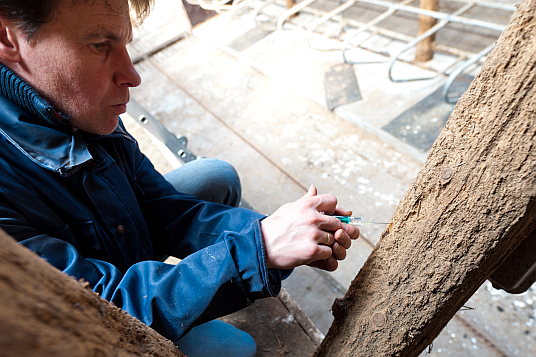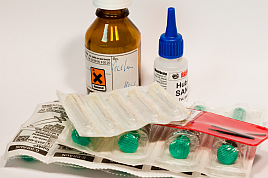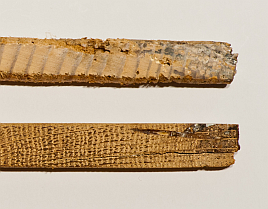Hints for the stabilization of sapwood and/or timber in bad condition
A frequent problem, especially with coniferous timbers, is that sapwood is in such a bad condition that it is almost impossible to get a fully intact sample.
Particularly in the case of coniferous timbers it is important to get a sample containing sapwood and wane, because without wane only a “terminus post quem” may be determined. The customer has to cope with only the “earliest possible year of felling”, which indeed is quite unsatisfying for building research. If sapwood did not survive sampling in the case of a pinewood sample for instance, an amount of 60-80, in an extreme case even up to 120 annual rings may be missing. The procedure described below may help to stabilize sapwood and generally timber in bad condition, if executed carefully. Thus an entire sample may be made even from bad material. Experience with series of samplings has shown that the achievement ratio is about 50%. Often a single sample in a collective, remaining completely intact, may be sufficient.


Things listed below will last out a couple of samplings:
• disposable syringes
• disposable needles
• cyanoacrylate of low viscosity
• activator-spray
• acetone
• HSS-spiral-drill 1,2mm
After choosing the area of sampling a couple of horizontal drillings* have to be done with the 1.2 mm spiral-drill. Please use the length of the spiral-drill fully to get into contact with the heartwood. After that, the whole area under investigation should be treated by using a syringe and needle filled with acetone to moisten it via the boreholes. Next, the stabilizing agent cyanoacrylate must be injected via the boreholes immediately.
Fill in plenty of cyanoacrylate in every borehole. The process of drying will last for about ten minutes. To fasten the drying process, please use the activator-spray. The time needed for the drying process - with or without activator-spray - may vary depending on atmospheric humidity an wood species.
Therefore we would recommend to prepare a test-area before sampling to get more information about the approximate time of drying. After the stabilization-process has been finished, the sampling may be carried out. Please take care that the fence for drilling is well centrered in the stabilized area. Thus the sample will be taken in the middle of the stabilization zone too.
* The easiest way to get good results is the use of a mini-drill with batteries, such as Dremel or Proxxon. Using a nomal electric drill is possible too, but will be more delicate to do, becausse of the sensitivity of the 1.2 mm spiral-drill.
ATTENTION: All components of the set for the stabilization of sapwood are specifically marked with safety instructions! All material has to be considered as HAZMAT and must be kept out of reach of childern!







